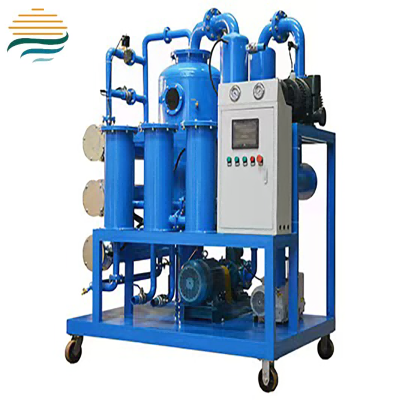What is the grade of transformer oil?
Transformer oil is a crucial component in power transformers, and its grade plays a significant role in determining the performance and reliability of these essential electrical devices. The grade of transformer oil is defined based on a set of characteristics and properties that are carefully regulated to meet the specific requirements of different transformer applications.
Basis for Grade Classification
1. Dielectric Strength
Dielectric strength is one of the primary factors in classifying transformer oil grades. It measures the ability of the oil to withstand electrical stress without breaking down and conducting electricity. Higher - grade transformer oils typically have a higher dielectric strength. For example, in mineral - based transformer oils, a common standard for dielectric strength is around 60 - 70 kV/mm for new, high - quality oils. This high dielectric strength is essential for ensuring effective electrical insulation within the transformer, preventing electrical arcing between the windings and other conductive components.
2. Viscosity
Viscosity, which refers to the oil's resistance to flow, is another important parameter for grade determination. Transformer oil needs to have an appropriate viscosity at different operating temperatures. At normal operating temperatures, it should flow easily to efficiently transfer heat from the hotspots within the transformer to the cooling system. However, at low temperatures, it should not become too viscous, as this could impede its circulation. Different grades of transformer oil are formulated to have specific viscosity - temperature characteristics. For instance, some grades are designed to maintain a relatively low viscosity even at cold temperatures, making them suitable for transformers operating in harsh climates.
3. Thermal Stability
The thermal stability of transformer oil is crucial as transformers generate heat during operation. Higher - grade oils are more resistant to thermal degradation. They can withstand elevated temperatures for extended periods without significant changes in their properties, such as oxidation or breakdown. Thermal stability is often tested by subjecting the oil to high - temperature conditions for a specific duration and then analyzing its physical and chemical properties. Oils with better thermal stability are more likely to have a longer service life and maintain their performance under various load and temperature conditions.
4. Moisture and Contaminant Tolerance
The ability of transformer oil to tolerate moisture and contaminants also affects its grade. Moisture in the oil can significantly reduce its dielectric strength, while contaminants like particles or acids can cause corrosion and other problems. High - grade transformer oils are formulated to be more resistant to moisture ingress and can better tolerate small amounts of contaminants without a substantial degradation in performance. They may also have better self - cleaning properties or be less likely to absorb and retain contaminants.
Common Transformer Oil Grades
1. Mineral Oil Grades
Mineral oil is one of the most widely used types of transformer oil. It is available in different grades. For example, in the United States, ASTM (American Society for Testing and Materials) has standards for mineral - based transformer oils. ASTM D3487 covers general - purpose mineral insulating oils. These oils are suitable for a wide range of transformer applications, including distribution transformers in residential and commercial areas. They offer good electrical insulation and heat - transfer properties at a relatively low cost. However, their performance in terms of environmental friendliness and fire resistance may be limited compared to some other types of oils.
2. Synthetic Ester Oil Grades
Synthetic ester oils are known for their excellent performance characteristics, and they also come in different grades. These grades are often designed to meet specific high - performance requirements. For instance, some synthetic ester oil grades have extremely high dielectric strength, making them suitable for high - voltage transformers in power transmission grids. They also typically have better thermal stability and fire resistance compared to mineral oils. Additionally, synthetic ester oils are biodegradable, which is an advantage in terms of environmental impact. Different grades may vary in their chemical composition to optimize specific properties such as viscosity - temperature behavior or oxidation resistance.
3. Natural Ester Oil Grades
Natural ester oils, derived from renewable sources like vegetable oils, also have their own grade classifications. These oils are becoming more popular due to their environmental benefits. Natural ester oil grades are formulated to provide good electrical insulation and heat - dissipation capabilities. They may have different levels of resistance to oxidation and moisture, depending on the specific grade. Some natural ester oil grades are designed for use in transformers where fire safety and environmental sustainability are top priorities, such as in certain industrial applications or in areas near sensitive ecosystems.
Choosing the Right Grade
The choice of transformer oil grade depends on several factors. The voltage level of the transformer is a crucial consideration. High - voltage transformers require oils with high dielectric strength and excellent thermal stability to ensure reliable operation. The operating environment, including temperature range and humidity, also plays a role. In cold climates, oils with low - temperature - resistant viscosity grades are preferred. Additionally, cost - effectiveness, environmental impact, and maintenance requirements need to be taken into account. For example, while synthetic ester oils may offer superior performance in some aspects, they are generally more expensive than mineral oils.
In conclusion, the grade of transformer oil is a complex concept based on multiple properties. Understanding these grades and their implications is essential for selecting the right oil for a particular transformer application, ensuring the efficient and reliable operation of power transformers and, ultimately, the stability of the electrical grid.





